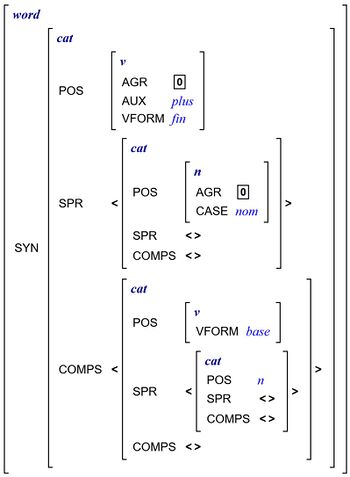Syntax 1 Wiki: Week 6: Difference between revisions
Jump to navigation
Jump to search
No edit summary |
|||
| Line 20: | Line 20: | ||
(1)<br> | (1)<br> | ||
a. <span style="color: blue>It<sub>idiom</sub></span> will <span style="color: blue>rain</sub></span>.<br> | a. <span style="color: blue>It<sub>idiom</sub></span> <span style="color: blue>rained</sub></span>.<br> | ||
b. <span style="color: blue>It<sub>idiom</sub></span> will <span style="color: blue>rain</sub></span>.<br> | |||
(2)<br> | |||
a. * <span style="color: blue>The student</sub></span> <span style="color: blue>rained</sub></span>.<br> | |||
b. * <span style="color: blue>The student</sub></span> will <span style="color: blue>rain</sub></span>. | b. * <span style="color: blue>The student</sub></span> will <span style="color: blue>rain</sub></span>. | ||
Revision as of 13:52, 29 November 2020
Raising and Control
Raising
- There is a special verb class called subject raising verbs.
- These verbs are easy to identify by applying the following tests.
- If the verb passes theses tests, then it is a subject raising verbs.
- Usually, if the verb passes one of these tests, then it passes all of them.
Subject raising verb Test Nr. 1
If the verb V takes a non-finite VP-complement headed by the verb rain, then V must take the idiomatic word it as its subject.
Illustration:
(1)
a. Itidiom rained.
b. Itidiom will rain.
(2)
a. * The student rained.
b. * The student will rain.
The student
Navigation:
